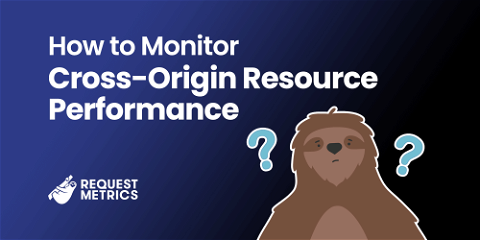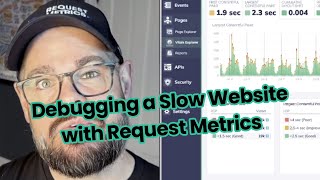Blog » Performance Blog
-
Measuring Web Performance in 2024: The Definitive Guide
This is the complete guide to the metrics, methods, and measurements of web performance in 2023. If you run a website, this guide has all the fundamental i... Read more »
-
Explaining Performance to Non-Technical Stakeholders
Whether you’re an e-commerce company, a SaaS provider, or a content publisher, understanding the performance of your website is important to everyone on the ... Read more »
-
Audit Google Ad Performance With Lighthouse
Implementing Google Ads can be complicated. If done incorrectly, it negatively impacts your website’s performance. Fortunately, there is a new Google Light... Read more »
-
How To Read Flame Charts and Percentiles
Charting can be complicated and intimidating, especially when dealing with web performance data, flame charts, and percentiles. There is so much data crammed... Read more »
-
Google Ads Are Slowing You Down
Google has a well earned reputation for speed. At least on their own sites. It’s an entirely different story when it comes to their ad network. Google ads ... Read more »
-
See Current Core Web Vitals with Chrome
Google is using Core Web Vitals as a factor in search results rankings. They’ve also found that improving Core Web Vitals can lead to increased traffic, sale... Read more »
-
Optimizing Static HTML And Images With Webpack
Webpack is great for building JavaScript applications, but did you know it can optimize static HTML assets too? In this article, we use Webpack to process HT... Read more »
-
Optimizing Images for Web Performance with NGINX
Images are a constant source of pain when developing websites. There are many formats and resolutions a developer must consider in order to maximize web per... Read more »
-
Fast Inline Images With React and Webpack
Webpack is great for building React applications, but did you know it can help you optimize app performance too? Webpack can automatically inline image data,... Read more »
-
Using Brotli Compression in NGINX
Brotli is gaining steam as the compression algorithm du jour for high performance websites. Created back in 2013 by Google to decrease the size of WOFF files... Read more »
-
Advertising's Performance Tradeoffs
Advertising is everywhere on the web and users have noticed. More than 40% of internet users block ads. Are these users sticking it to the man or just tired ... Read more »
-
Fix Your First Contentful Paint (FCP): Cheat Sheet
Are slow FCP scores getting you down? Worried that website performance is frustrating your users and hurting your SEO rankings? This FCP cheat sheet has all... Read more »
-
Using First Contentful Paint (FCP)
First Contentful Paint, or FCP, measures the time take to render the first element of a webpage. It’s a modern, user-centric measurement of how fast users s... Read more »
-
Tutorial: Monitoring Your Core Web Vitals
Web performance used to be easy. You’d time how long a page takes to load, easy. But the rise of client-side JavaScript has introduced bold new ways for web... Read more »
-
How Hacker News Crushed DavidWalshBlog
Earlier this month, David’s heartfelt posting about leaving Mozilla made the front page of Hacker News. Traffic increased by 800% to his already-busy website... Read more »
-
Web Performance Profiling: Instacart.com
Grocery shopping is tedious and time consuming. In search of a more streamlined experience, I decided to try Instacart. Unfortunately, using their site is ... Read more »
-
Vital Web Performance
I hate slow websites. They are annoying to use and frustrating to work on. But what does it mean to be “slow”? It used to be waiting for document load. Then ... Read more »
-
Web Performance Profiling: Google.com
How is Google so fast? It’s so fast we take it for granted. It feels instant from the time you search to when results are displayed. What can we learn abou... Read more »
-
Measuring First Input Delay (FID)
Warning. First Input Delay (FID) was retired as a Core Web Vital in 2024 due to several shortcomings in measuring interactivity. It was replaced with Interac... Read more »
-
Web Performance Profiling: Nike.com
Google has long used website performance as a ranking criteria for search results. Despite the importance of page experience for SEO, many sites still suffe... Read more »
-
Measuring Largest Contentful Paint (LCP)
Largest Contentful Paint (LCP) is a measurement of how long the largest element on the page takes to render. It’s one of several Web Vital metrics that measu... Read more »
-
Fastest News: Best Performing News Website
News teams often compete to break the story first. We think they should also compete on being the first to load their website. Let’s apply our web performanc... Read more »
-
Measuring Cumulative Layout Shift (CLS)
Cumulative Layout Shift (CLS), sometimes known as jank, is a measurement of how much elements move due to late-rendered content. You can think of it as a mea... Read more »






